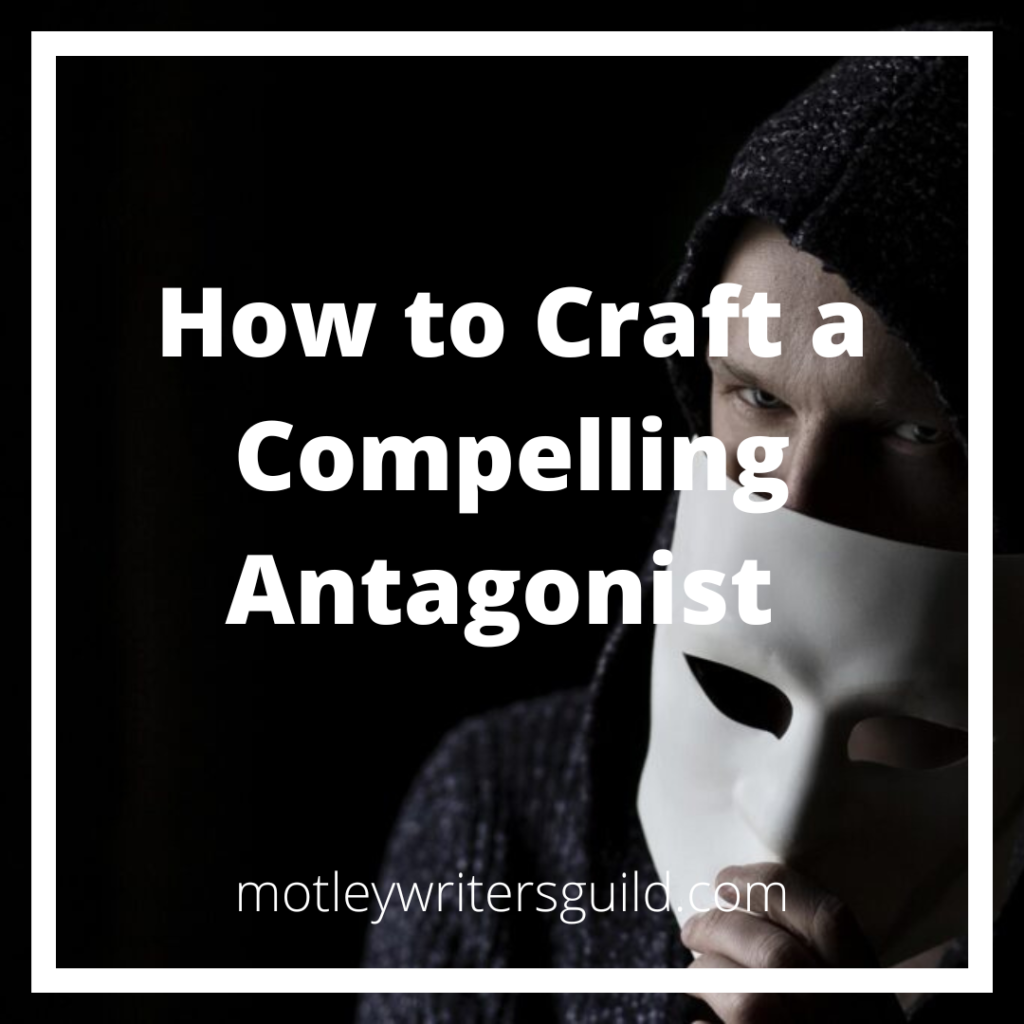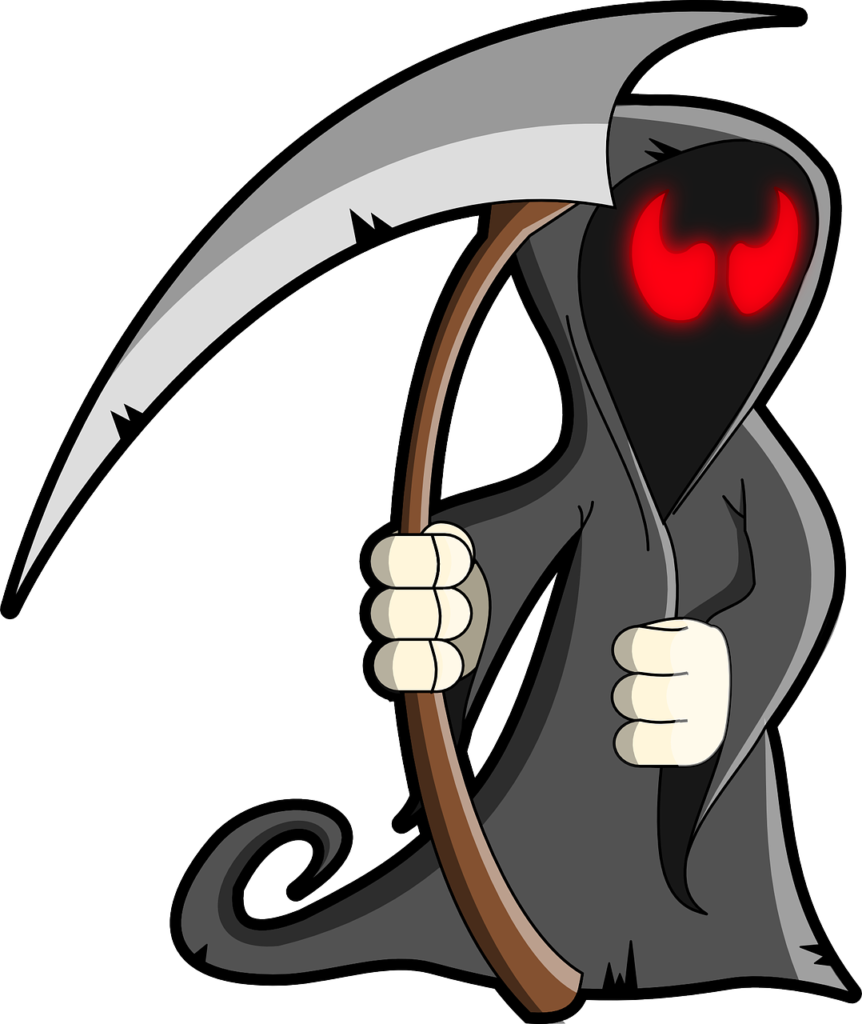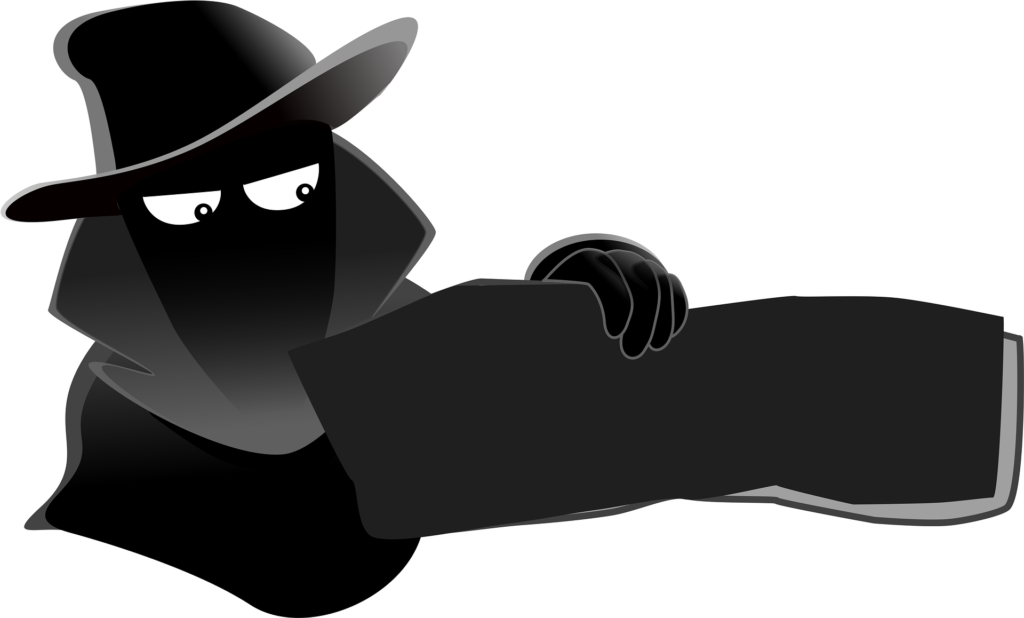
What do you first picture when you think of an antagonist?
“Thunder rolls off in the distance. All around, you can feel dark shadows threatening to move in and slowly consume you. At the edge of the misted forest, you see them coming towards you; a long dark cloak, glinting malignant eyes, and demonic laugh that rings out through the clearing.”
For me, I usually picture the classic tropes listed above. But with so many stories and storytelling mediums nowadays, villains, or as we call them in the writing world, “Antagonists,” can take so many different forms. People have begun to expect original, well crafted, carefully thought-out antagonists in modern day stories, and it’s our job as writers to deliver that.
Okay, so where do I start?

There’s a lot of good resources out there nowadays on how to craft strong protagonists and supporting characters, but when it comes to crafting an Antagonist, it can be a little bit trickier. In fiction, when I think of the most important aspects in creating a compelling story, conflict is right at the top. The antagonist or antagonists are ultimately the source of your conflict which, in a sense, means that they can make or break a story.
A common misconception is that an antagonist and a villain are one and the same. While that’s the case in many stories, there are plenty of examples where that isn’t true. At the beginning of the 2010 film “Megamind,” we follow the story from a supervillain’s perspective, and his rival, Metroman, is his first antagonist, despite being what we would consider a classic superhero in every way. In some stories, the antagonist isn’t even a person. In the 2001 novel “Life of Pi,” the environment itself takes on the antagonizing role. In all cases, the antagonist presents an obstacle to our protagonist, and the need to overcome that obstacle is what drives the story forward.
So how do I craft a compelling antagonist? Well, for me it’s a backwards process. When creating a main character or a protagonist, one generally starts from their roots. Simple questions like who are they, what are they striving toward, and how do they fit into the setting at large? The more questions you ask, the more you begin to shape the character.
When creating an Antagonist, it’s a similar but different process. You have to constantly be thinking about your main character when creating them. Even a well written, fleshed out antagonist can fall flat they’re not a good fit for the story you are trying to tell. So, in backwards fashion, I first think of an antagonist that fits well within the story and presents an obstacle to the protagonist. Once that’s in place, I work my way backwards, developing them and crafting a compelling backstory to explain how they ended up where they are now.
Remember: The goal is to challenge your Protagonist

There are a hundred different examples of how to do this. For example, revenge is an incredibly effective device if used properly. Perhaps the antagonist wronged the protagonist in some way, and that is the driving force of their journey. Or it could be the opposite, where the protagonist has to face up to what they have done in the past.
Relationships are another strong device that you can use to connect your characters. Maybe the antagonist is a good friend or family member to your main character, and when they start causing trouble, the hero has no choice but to step in and face them. This is compelling because the protagonist has to decide between doing the right thing or potentially harming someone they care about.
If your Protagonist is a villain or a more heavily flawed character themselves, jealousy can be an effective device. Maybe they went wrong somewhere or were put in a situation that led them down a dark path, and the Antagonist is someone who went the opposite way, and is someone who has it all. That resentment leads to the ongoing conflict.
One of my favourite devices to use is a clash of ideals. In some stories, the villain and the hero have no personal connection of any sort, but end up in conflict through the differences, and even more importantly, the similarities they have. In the 2019 film “How to Train your Dragon: The Hidden World,” we see an excellent example of this device. Both the Protagonist, Hiccup, and the antagonist, Grimmel, share similar history and qualities, despite never having interacted prior to this point. Neither one are incredible warriors or Vikings like the rest of their village, but both are incredibly smart and resourceful. The difference between them is when Hiccup came upon a dragon who was shot down and helpless years back, he decided to spare it, while Grimmel, faced with the same predicament, chose to kill it. This led them down separate paths despite their similarities.
The reason I like this device so much is because it presents a sort of “what if” scenario. What if the hero gave in to that internal struggle? What if they chose to go down the wrong path? If a hero’s journey is about overcoming an obstacle, internal or external, and growing from that, then an excellent way of crafting a villain is by having them fail to overcome similar obstacles, and seeing what the consequences of that are.
These are but a few examples of how to challenge your protagonist. If your antagonist has no connection to your main character, whether that’s personal, philosophical, or physical, then it will ultimately be difficult to have them challenge the protagonist in some way, ultimately ruining the conflict you are trying to setup.
How do I use my Antagonist effectively?

The role your antagonist plays in the story can vary drastically from tale to tale. Whether the Protagonist is aware of them or actively interacting with them regularly depends on what kind of story you’re trying to craft.
In J.R.R Tolkien’s “Lord of the Rings” and Nickelodeon’s “Avatar the Last Airbender,” I see two excellent examples of how an antagonist can be used extremely effectively without even interacting with our main characters. In both stories, the villains, Sauron and Firelord Ozai, dominate the hero’s thoughts at all times. People constantly mention their names, always with a note of fear or dread. In both tales, we know that the hero has to bring them down eventually, but the task seems impossibly daunting. Their entire journey involves travelling or training to fulfill that one ultimate goal. Despite not seeing these villains much, we see the chaos and destruction their armies and servants cause at every stage of the journey.
On their own, these villains might seem one dimensional, and with very little backstory or reason for their evil actions one would think they are destined to fall flat. But because of how both are used in their respective stories, and how well they challenge and strike fear into the hearts of the heroes, they work perfectly.
Many stories nowadays go for an opposite approach. More and more I see Antagonists interacting with the main characters on a regular basis. It’s almost like they are going on the journey with them. For this to work, you need a very different kind of antagonist. If Sauron were constantly showing up and talking to the fellowship in Lord of the Rings, people would see him as one dimensional and boring, unless Tolkien drastically changed how he was written.
In these kinds of stories, I find many more uses of the “tragic backstory” approach. The Antagonist is not necessarily all powerful, nor are they pure evil. We see their flaws and failings, and ultimately where they went wrong and how they ended up going head-to-head with the protagonist. This is compelling, because now the audience can sympathize with them, and unlike the Protagonist who is most likely going to succeed, the fate of the Antagonist is unknown. Will the conflict between them be resolved, and the antagonist redeemed? Or will they be overcome or killed so that the main character can achieve their goal?
How to use your antagonist and what kind of story you’re trying to tell is just as important, if not more important, than crafting the character itself. It doesn’t matter if you have the most tragic and authentic villain backstory the world has ever seen: if you don’t use them properly, or in the correct kind of story, it will fall flat.
Hey, what about twist villains? Those are cool, right?

Ah yes, it just wouldn’t be right to write an article about antagonists without addressing the most commonly used trope of 21st century fiction. Every story needs a twist at some point to keep everyone interested, so what better way than a twist villain, right?
Well, yes and no. On top of being overused nowadays, putting a twist villain in your story is risky. If done well, it can be brilliant, and can make for some of the most compelling and dramatic tales the world has ever seen. Done poorly, however, and it can sabotage your entire story.
The main attraction of a twist villain is the shock factor. That first moment of “Oh my God, I can’t believe (insert name here) was behind it the whole time!”
Unfortunately, a common pitfall is using it for the shock factor without doing any of the previous steps we’ve talked about. If your antagonist isn’t compelling, the shock factor will wear off very fast, leaving you with nothing. If you want to use a twist villain, you absolutely have to make sure to have it planned out from the very start. Just because the audience doesn’t know about their intentions, doesn’t mean you have the same luxury.
Make sure to ask all the important questions when making a twist villain. What are their motivations? Why are they keeping their intentions a secret? How have they managed to keep the secret for as long as they have? Ask yourself why you’re including the twist villain in your story. If you can’t think of several reasons beyond the shock factor, maybe reconsider. Don’t make a twist villain for the sake of making a twist villain.
One of the greatest joys of a twist villain is reliving a story for a second time with the prior knowledge, and picking up on all the subtle hints. Foreshadowing is a must when it comes to twist villains, because if it isn’t there at all, the audience will feel cheated, or they won’t feel as though the story makes sense. While the hit 2013 animated movie “Frozen” had a heartwarming message and a great soundtrack, many people were annoyed by the use of the twist villain at the end of the story. Not only was there no foreshadowing for the character of Hans to betray the main characters, but the entire thing feels like an afterthought that the writers didn’t decide on until later. His actions, had he been planning to betray them all along, would’ve been different in several scenes. Combine that with the lack of a compelling motivation, or much character development for him at all, and you have a story that, while is still decent overall, could’ve had a much stronger ending.
The reverse is also true. Too much foreshadowing and your audience will guess very early on who the real antagonist is. This lessens the impact of the reveal and ultimately makes the twist not very compelling. If the audience figures it out long before the characters do, and yet the reveal is still treated like a big surprise, then they will feel like you’re insulting their intelligence. In the 2018 film “Incredibles 2,” the twist villain had an okay motivation and backstory, but was made far too obvious for the audience prior to the reveal. While I still enjoy the movie, this an area that could have made it so much better.
It’s a fine line to tread, and even if someone does figure out your twist ahead of time, there should still be some level of doubt in their minds. That way, when the reveal finally happens, they will actually feel smart for having deciphered it, rather than insulted for how obvious it was. Finding this perfect balance is the number one challenge of this trope. If you want to have a twist villain in your story, be aware of all of these obstacles beforehand.
In Conclusion:
- Treat your Antagonist the same way you’d treat any prominent character in your story. Don’t let them be an afterthought!
- Your Antagonist or Antagonists are the source of conflict in the story. They should challenge or present and obstacle to the protagonist in some way
- Use them effectively. Make sure you have the right Antagonist for the right story, or it will fall flat
- If you want to use a trope such as a twist villain, always plan ahead, and ensure it fits with the story you are telling. Do NOT let it be an afterthought. Also, make sure not to forget the previous steps when doing something like this.
And have fun with it! Antagonists have the potential to be some of the most memorable and compelling characters in all mediums of storytelling. Let your imagination run wild, and experiment until you’ve crafted that perfect foil for your main character.
–Kieran O’Connor of the Motley Writers Guild
If you enjoyed this post, please subscribe for notice of new blog posts from The Motley Writers Guild.



